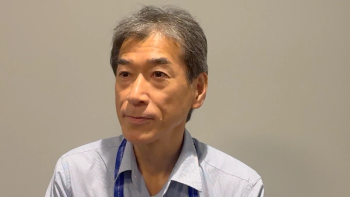
|Videos|April 17, 2017
Vaccines to Prevent High-Grade Glioma
Author(s)Hideho Okada, MD, PhD
This video examines current research on the use of vaccines in low-grade glioma for the prevention of high-grade disease.
Advertisement
In this video, Hideho Okada, MD, PhD, of the University of California, San Francisco, discusses current research on the use of vaccines in low-grade glioma for the prevention of high-grade disease.
Okada gave a presentation on this topic at the 2017 American Association for Cancer Researcher (AACR) Annual Meeting, held April 1–5 in Washington, DC.
Newsletter
Stay up to date on recent advances in the multidisciplinary approach to cancer.
Advertisement
Advertisement
Advertisement
Trending on CancerNetwork
1
FDA Approves Updated Cosibelimab Label in Cutaneous Squamous Cell Carcinoma
2
FDA Approves Novel Blood-Based Prostate Cancer Test for Elevated PSA Levels
3
Subcutaneous Toripalimab Meets Primary End Points in Nonsquamous NSCLC
4
Zanidatamab Shows Meaningful Benefit in HER2+ Biliary Tract Cancer
5



![According to John Henson, MD, “What we need are better treatments to control the [brain] tumor once it’s detected.”](https://cdn.sanity.io/images/0vv8moc6/cancernetwork/e0d29c38bb732429ae370e4ef7d1829a10c96446-2992x1684.png?w=350&fit=crop&auto=format)














































































